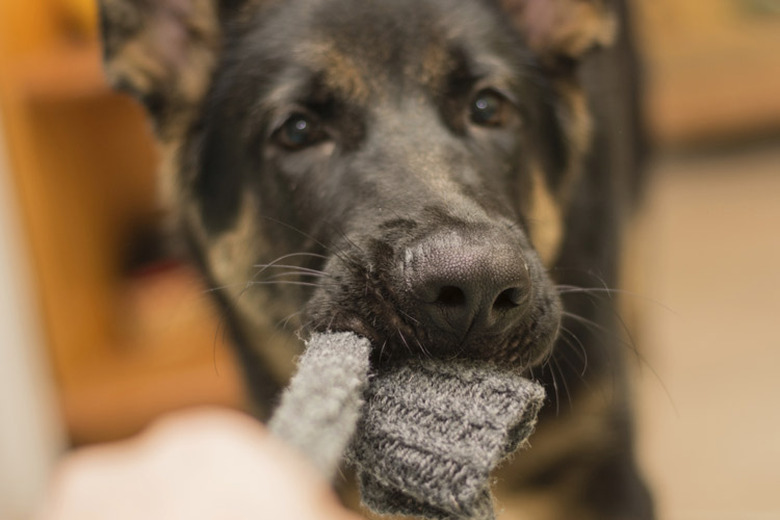Stop A Dog From Stealing Things & Running
Raise your hand if your pooch has never ever stolen something and run off with it. Anyone? We didn't think so. Virtually all dogs love to play "keep-away" with your stuff (until trained not to) and if you chase your dog to get the item back you are basically playing along — making the "game" all the more fun for him. Stopping your dog from stealing your items and running away requires strategic action.
Tip #1 - Provide loads of mental stimulation for your dog. If your dog is having a blast stealing your stuff for a good part of the day, he is likely bored and simply looking for a way to make his life much more entertaining. The saying "an idle mind is the devil's workshop" perfectly fits this scenario. Make sure Rover has plenty of interactive toys, schedule some reward-based training sessions during the day and provide outlets for pent-up energy so he has more productive ways to blow off some steam.
Tip #2 -Manage your dog's environment. Leaving items around that your dog steals is just asking for trouble. Often, it is simply easier to keep those items out of reach rather than repeatedly reprimanding your dog for stealing them. For instance, if your dog steals your dirty laundry from the basket, simply store it in a place your dog doesn't have access to.
Tip #3 – Ignore the stealing behavior if the stolen item is something you don't care too much about. As much as this may sound like bad advice, you must think like a dog. If your dog steals and runs away and you give your dog attention by scolding him or running after him, your dog will continue engaging in this behavior because it brought attention or he simply thought it was fun. If nothing happens, you are removing the payoff so your dog may think the game is no longer entertaining; he may consequently engage in it less and less.
Caution: Don't corner your dog and forcing the stolen item out of your dog's mouth. Forcefully grabbing items from your dog's mouth may turn stealing into a much more serious behavioral problem known as resource guarding. Avoid showing interest in the stolen item if feasible as this will trigger the "keep away" game.
Tip #4 – Play the "trade it game." Should the stolen item be something you really care about or is something that may harm your dog, try to trade it instead of running after him in a pointless game of chase. Arm yourself with some tasty treats that are worthy of trading. In many cases, your dog will come straight towards you as soon as he hears the noise of the treat bag opening. Say "trade" as you show the treat. In order to savor the tasty delicacies, Rover will have to disengage his mouth from your stolen item. When he does this, praise him, take the item and simultaneously give him the treat in exchange.
Tip #5 – Put the game of "keep away" on cue. This tip comes from dog behaviorist Jean Donaldson, author of the book "The Culture Clash." Basically, instead of reprimanding your dog for stealing stuff, put the behavior on cue so you are in charge of the game. Leave some enticing toys around and tell your dog "I'm gonna get you" as your wriggle your fingers in a playful manner. This should become the cue that tells your dog he should pick up a toy and run away with it and that you will chase him. Afterward, sit down. Most likely your dog will solicit you to play again. Let him understand that you are in charge of the game and will continue playing only if he brings the toy to you and drops it.
By Adrienne Farricelli
References
Veterinary Partner: Stealing: Is Your Dog a Thief?
Quick and Dirty Tips: Dogs Who Steal Your Stuff
Jean Donaldson; The Culture Clash
Clicker Train USA: Leave it
About the Author
Adrienne Farricelli has been writing for magazines, books and online publications since 2005. She specializes in canine topics, previously working for the American Animal Hospital Association and receiving certification from the Certification Council for Professional Dog Trainers. Her articles have appeared in "USA Today," "The APDT Chronicle of the Dog" and "Every Dog Magazine." She also contributed a chapter in the book " Puppy Socialization – An Insider's Guide to Dog Behavioral Fitness" by Caryl Wolff.
